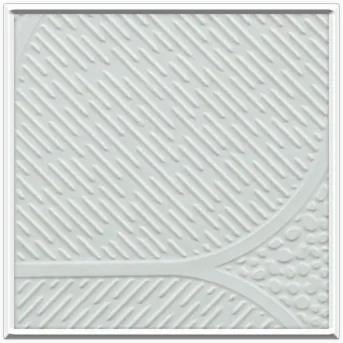Nov . 17, 2024 12:13 Back to list
Specification Guidelines for Mineral Fiber Ceiling Board Products and Applications
Understanding Mineral Fiber Ceiling Board Specifications
Mineral fiber ceiling boards are a popular choice in both commercial and residential construction due to their outstanding acoustic properties, fire resistance, and aesthetic versatility. These boards are primarily composed of mineral fibers, typically sourced from natural minerals, combined with additives that enhance their performance and durability. Understanding the specifications and characteristics of mineral fiber ceiling boards can help architects, builders, and homeowners make informed choices for their construction and renovation projects.
Composition and Manufacturing Process
Mineral fiber ceiling boards are manufactured using a blend of natural and synthetic fibers. The primary raw materials include fiberglass, mineral wool, and various additives that improve strength and reduce moisture absorption. The manufacturing process involves a wet process in which the fibers are mixed with a binder and formed into sheets. These sheets are then heated to cure the binder, resulting in a lightweight yet sturdy ceiling board.
Key Specifications
1. Acoustic Performance One of the standout features of mineral fiber ceiling boards is their acoustic insulation capability. These boards are designed to absorb sound, thus making them an excellent option for spaces that require sound control, such as offices, classrooms, and hospitals. The Noise Reduction Coefficient (NRC) is a crucial specification for these boards, indicating their ability to absorb sound frequencies. Boards with an NRC rating of 0.85 or higher are considered highly effective.
mineral fiber ceiling board specification

2. Fire Resistance Safety is a paramount concern in building materials, and mineral fiber ceiling boards meet stringent fire safety standards. Most boards have a Class A fire rating under ASTM E84, indicating that they resist flames and do not contribute to fire spread. This makes them suitable for various applications, including high-rise buildings and commercial spaces.
3. Moisture Resistance Certain mineral fiber ceiling boards are treated to resist moisture, making them ideal for high-humidity environments such as kitchens and bathrooms. Look for boards with a high level of moisture resistance and those specifically designed for use in areas where condensation and steam can be an issue.
4. Dimensions and Weight When selecting mineral fiber ceiling boards, dimensions and weight play a crucial role in installation. Standard sizes typically range from 2x2 feet to 2x4 feet panels, with a thickness of about 0.6 to 1 inch. It's essential to consider the weight of the boards since this can affect installation choices and support structures.
5. Aesthetic Finish Mineral fiber ceiling boards come in various textures and finishes, allowing for creative design solutions. Options include smooth surfaces, fissured patterns, and tiles with mineral or painted finishes. The choice of texture can also influence acoustic properties, with some patterns enhancing sound absorption more than others.
Conclusion
Mineral fiber ceiling boards offer a versatile solution for various construction needs, marrying functionality with aesthetic appeal. By understanding the specifications related to acoustic performance, fire resistance, moisture control, dimensions, and aesthetic finishes, stakeholders can make educated decisions that meet both their practical requirements and design aspirations. Whether it's renovating a home or outfitting a new commercial space, mineral fiber ceiling boards provide a reliable and stylish ceiling solution.
-
Durable Ceiling T Grid Systems | Easy InstallationNewsAug.29,2025
-
PVC Gypsum Ceiling: Durable, Laminated Tiles for Modern SpacesNewsAug.28,2025
-
Pvc Gypsum Ceiling Is DurableNewsAug.21,2025
-
Mineral Fiber Board Is DurableNewsAug.21,2025
-
Ceiling Tile Clip Reusable DesignNewsAug.21,2025
-
Ceiling T Grid Modular DesignNewsAug.21,2025







